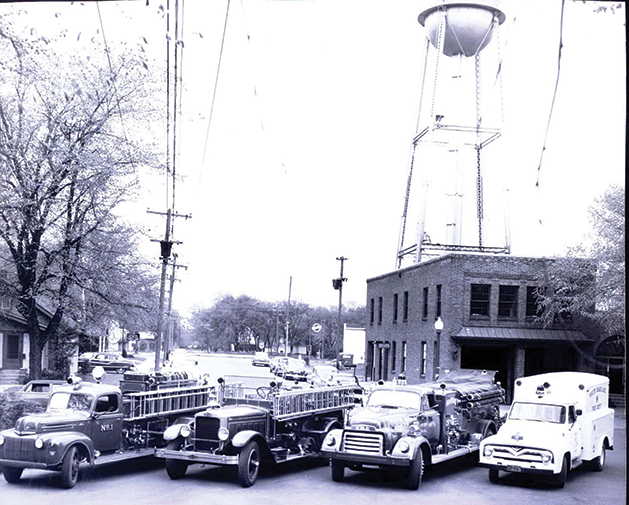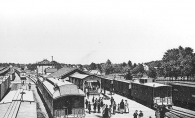
In the spring of 1888, the White Bear Fire Department formally organized as three companies: the Engine Company, the Hose Company and the Hook and Ladder Company. Almost immediately, an engine house was constructed by local contractor William H. Jackson at the northwest corner of Second Street and Clark Avenue at the cost of $1,320. The initial equipment order totaled less than $1,000 and was comprised of a horse-drawn pumper, hose cart and hook and ladder truck.
The unsophisticated communication system worked remarkably well. The first firehouse was a frame structure with a tower that held a 270-pound bell at its peak. A decade later, the original bell was traded in for a larger model that could be heard at a greater distance. This was a necessity due to the growth of the community and the increasing areas from which firefighters were being called. Today that second bell has been installed at White Bear Lake’s Fire Station Number Two in a display honoring former chief Gordon Vadnais.
Before hydrants were installed, the department had to rely on nearby lakes for water. This was problematic during many months of the year when the ice created an often impermeable barrier. Many homes and businesses that were used seasonally were lost when they caught fire and the notification was delayed due to the location of the structure or the inability to gain access to water.
As the technology changed, so did the department. The bell system gave way to a telephone call system and later mobile pagers. The fire-fighting equipment has evolved dramatically, and even more significant is the availability of fire prevention awareness and products. Today the White Bear Lake Fire Department responds to more medical calls than fire calls each year.
Sara Markoe Hanson is the executive director of the White Bear Lake Area Historical Society.









